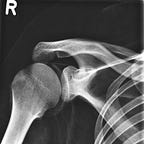Comparison of Photosynthesis and Photorespiration in C3/C4/CAM Plants — Tropical Plant Photosynthesis Adaptations
Key Points
Published in
2 min readApr 26, 2017
- Photorespiration is fundamentally inefficient due to the Rubisco enzyme acting on Oxygen instead of the desired Carbon Dioxide
- Most plants are ”non-tropical” — C3 plants.
- Tropical plants — C4
- Minimise photorespiration by physically seperating light-dependent reactions from the Calvin Cycle
- Desert plants — CAM (Crassulacean Acid Metabolism)
- Minimise photorespiration by performing the calvin cycle during the day.
- It is favourable to have a high CO2:O2 ratio so that rubisco will be more likely to act on CO2 (during the calvin cycle)
Comparisons
C3 Plants — Cool and Wet
- CO2 enters the mesophyll cell
- Rubisco converts CO2 → 3-PGA
- 3-PGA (3-Carbon) → Various sugars.
Approximately 85% of all plants are C3.
Stomata are open during the day, and close at night.
C4 Plants — Hot, Sunny, Tropical
Physical seperation — Mesophyll and neighbouring bundle-sheath cell. Stomata open during the day, closed at night
- CO2 enters mesophyll cell.
- PEP + CO2 → Oxaloacetate → Malate
- Malate is pumped into the bundle-sheath cell in order to ensure a high CO2:O2 ratio.
- Malate → CO2 + Pyruvate
- Pyruvate ferried back to mesophyll and converted to PEP
- This ferrying process is ATP-Dependent
- CO2 → Sugars via Rubisco.
CAM Plants — Very Hot and Dry
Time-seperation — Stomata open during the night to allow CO2 into the leaf, close during the day to ensure high CO2:O2 ratio
- CO2 enters mesophyll cell.
- PEP + CO2 → Oxaloacetate → Malate → Various organic acids.
- Organic acids pumpedto neighbouring cell to increase the CO2:O2 ratio
- PEP replenished from the Calvin cycle during the day.
- This process is ATP-dependent
